
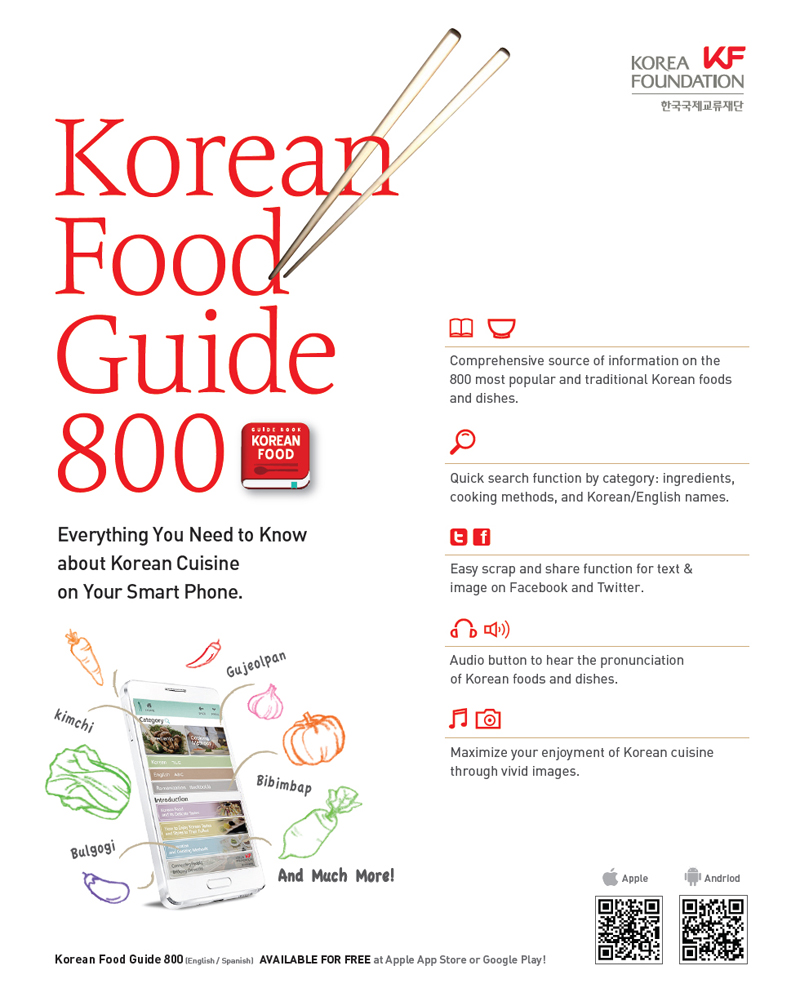
Korean Food Guide 800 English / Spanish Korean Food Guide 800 provides easy-to-understand information on 800 traditional and popular Korean foods, including homemade meals, side dishes, and soups, in English and Spanish! It also provides basic recipes and helpful information about popular Korean foods. Learn for yourself why Korean cuisine is the latest trend among people who value food that is flavorful as well as healthy and nutritious. Overview of Korean Food Guide 800 - Information on 800 Korean foods, categorized by ingredients and cooking methods! - English as well as Spanish texts for foreign users! - Search function to quickly find desired information! - For the pronunciation of Korean names, click the Audio button! - Find a dish that catches your eye? You can easily scrap and share text/image on Twitter and Facebook! - Enjoy the beauty of Korean cuisine through vivid images! (Additional images available with updates and links) * The Korea Foundation Connecting People, Bridging the World
Apple App Store https://itunes.apple.com/us/app/korean-food-guide-800/id896936657?mt=8 Google Play https://play.google.com/store/apps/details?id=com.kf.KoreaFoodGuide Preface With international travellers today being eager to grab an opportunity to sample local cuisine, Korea offers a rich variety of culinary delights. Yet finding reliable information on Korean food is no easy task for foreigners. It is a rare Korean individual who is capable of describing various Korean dishes in a manner intelligible to foreign visitors. Restaurants serving Korean food are seldom equipped with menus printed in English or other foreign languages.
And even when foreign language menus are available, restaurants tend to use different expressions for the same dish, thus creating urnnecessary confusion. This guide, consisting of over 800 terms for traditional and modern Korean foods in English and French, has been compiled primarily to help Koreans who would like to dine on Korean food at restaurants or at home, and provide an explanation of Korean cuisine to foreigners. We are hopeful that this guide will help Korean restaurateurs in and out of Korea to prepare menus in a more standardized and appealing manner. There is another purpose to this guide: to help foreigners understand Korea's food culture and feel more confident about ordering food in Korean restaurants. Each dish is presented with a brief description of its cultural background and how it is prepared, so that its flavors can be fully appreciated and enjoyed. The index is organized by name and keyword so it is easy to find any item and obtain more detailed information about any particular dish.
This book has been three years in the making. Since the Korea Foundation actively engages in a wide variety of international exchange projects to promote Korea's image abroad, we have long recognized the need for a book about Korean food such as this. The task of translating Korea's unique cuisine into English and French has been difficult and challenging. As such, linguistic factors and cultural issues as well, not to mention informational science, have been taken into account. This has required consultation with 20 Korean and international experts. I would like to express my heartfelt gratitude to all those who have contributed their expertise, time, and patience to this effort.
With the continuing interest and research of restaurateurs and scholars, we hope to keep adding to this guide and making it even more informative.
The Korea Foundation 1. 807 , // / / . 2. , . : 32 : 315, 397, 801 3. , . (sanjeok): Beef and Vegetable Brochette (1) (japsanjeok): Beef and Vegetable Brochette (2) (hwayangjeok): Beef and Vegetable Brochette (3) 4. (, ) (, ) . 5. (keyword) , . , ..

6. 2000 7 < > . , (-) . < > .. 1) '+' .. gajami-gui dureup-namul 2) 1 . gejang gukbap 3) . gaieun-yangnyeom seokkeo-jjigae jjin -mandu 4) '' gimchi , kimchi . 5) . 5) .
Jeonju-bibimbap Hamheung naengmyeon 6) ', , , , , , , , , , , , , , , , , ' 1 . gochujeon gwangeohoe How to use the Korean Food Guide 1. The 807 names of Korean foods / dishes in this Guide are listed in the order of the Korean alphabet. 2. Each entry consists of the name of the food in Korean, Romanized Korean, English and French. 3. 3.
To help readers better understand Korean foods, some entries provide the cultural and historical background of the food. 4. For some raw ingredients that are of Korean origin (e.g. Deodeok, Dureup, etc.) and for already well-established Korean dishes (e.g. Kimchi, Bibimbap, etc.), only Romanized Korean names are given, without English translations. 5.
The standard Korean names for food have been used. In certain entries, names in various Korean dialects are also included. In these cases, the name in dialect is cited first and followed with a single-sided arrow (), indicating that the reader should look for this food under the name after the arrow. e.g.) oksusubap gangnaengibap 32, Rice with Corn. For cross-referencing purposes, a double-sided arrow () is used, indicating that the reader should look under the following terms for similar or related dishes. e.g.) dongtae, Frozen Pollack myeongtae 315, bugeo 397, hwangtae-gui 801 6.
In the cases of some Korean dishes that are very similar to each other and still have different names, the same English name was used for each of the similar dishes. They can be distinguished from one another by the numbers in parenthesis. e.g.) sanjeok: Beef and Vegetable Brochette (1) japsanjeok: Beef and Vegetable Brochette (2) hwayangjeok: Beef and Vegetable Brochette (3) 7. To help users, two indexes are provided: an English name and keyword index, and a Korean keyword index. Materials, cooking methods, ingredients, food categories, etc. e.g.) Seasoned and Simmered Chicken (dakjjim) Seasoned and Simmered Chicken Spicy Grilled Chicken 174 Stir-fried Chicken 181 Seasoned and Simmered Chicken Seasoned Ark Shells 122 Seasoned Bushy Seaweed 735 Seasoned and Simmered Chicken 184 Simmered Abalone 615 Simmered Beef Shank 418 8. e.g.) Seasoned and Simmered Chicken (dakjjim) Seasoned and Simmered Chicken Spicy Grilled Chicken 174 Stir-fried Chicken 181 Seasoned and Simmered Chicken Seasoned Ark Shells 122 Seasoned Bushy Seaweed 735 Seasoned and Simmered Chicken 184 Simmered Abalone 615 Simmered Beef Shank 418 8.
Herein, the romanization of Korean words is based on the Korean Romanization System adopted by the Ministry of Culture and Tourism on July 7, 2000. Korean Food and Its Delicate Tastes How do we start talking about Korean food? With compliments, of course! While in English one might say good food is tasty, delicious, or perhaps unique, Korean language has its own set of compliments. When eating a hot or spicy soup, most Koreans will say siwonhada , which literally translates as "cool" or "refreshing" and is also used to describe the feeling after visiting a sauna or spa. The highest compliment you can give a Korean cook is to say the food has a gamchilmat . This describes food that wraps around the palate, enveloping the whole mouth with flavor. There is no equivalent term in English, and here we begin to see the delicate subtleties of Korean food.
What is Korean Food? Korean foods offer a wide array of tastes that are distinct from the cuisine of its close neighbors. While Chinese food can be characterized by a strong and colorful taste, and Japanese flavors tend to be clean and light, Korean foods are based on natural tastes, both strong and light, fresh and spicy. To understand Korean food is to enjoy it more, so it is worthwhile to look at some of the traits of Korean cuisine. An art of spices One of the main ingredients in Korean cooking is various seasonings or spices, including garlic, green onions, red chili pepper powder, soy sauce, sesame oil, black pepper, vinegar, ginger and sesame seeds. The actual ingredients, method of mixing, and proportions differ from region to region and from cook to cook, but all over the country these are the building blocks for creating the diverse tastes of Korean dishes. In many Korean dishes, the spices used are more important than the main ingredient, whether it be fish, meat or vegetable.

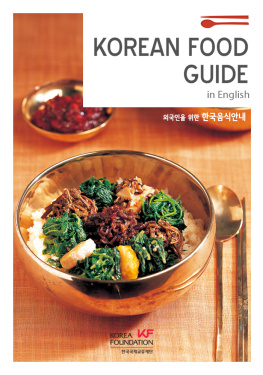
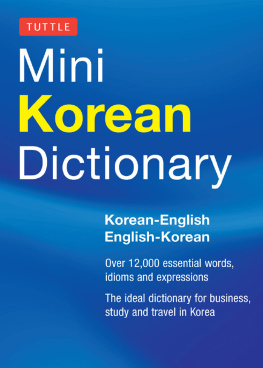

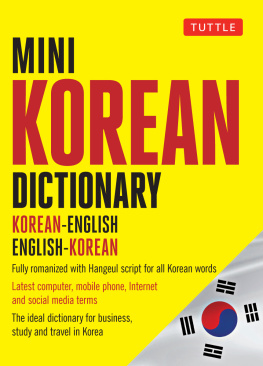

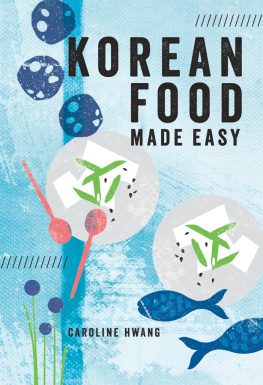
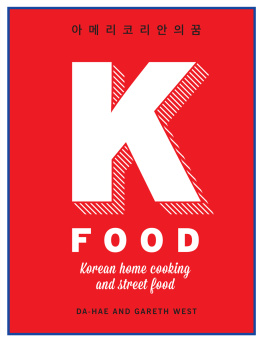
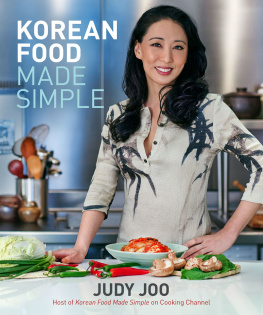
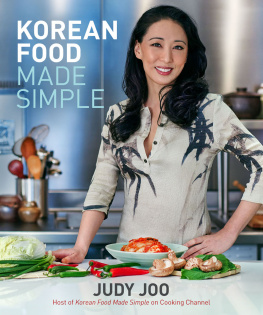

 Korean Food Guide 800 English / Spanish Korean Food Guide 800 provides easy-to-understand information on 800 traditional and popular Korean foods, including homemade meals, side dishes, and soups, in English and Spanish! It also provides basic recipes and helpful information about popular Korean foods. Learn for yourself why Korean cuisine is the latest trend among people who value food that is flavorful as well as healthy and nutritious. Overview of Korean Food Guide 800 - Information on 800 Korean foods, categorized by ingredients and cooking methods! - English as well as Spanish texts for foreign users! - Search function to quickly find desired information! - For the pronunciation of Korean names, click the Audio button! - Find a dish that catches your eye? You can easily scrap and share text/image on Twitter and Facebook! - Enjoy the beauty of Korean cuisine through vivid images! (Additional images available with updates and links) * The Korea Foundation Connecting People, Bridging the World
Korean Food Guide 800 English / Spanish Korean Food Guide 800 provides easy-to-understand information on 800 traditional and popular Korean foods, including homemade meals, side dishes, and soups, in English and Spanish! It also provides basic recipes and helpful information about popular Korean foods. Learn for yourself why Korean cuisine is the latest trend among people who value food that is flavorful as well as healthy and nutritious. Overview of Korean Food Guide 800 - Information on 800 Korean foods, categorized by ingredients and cooking methods! - English as well as Spanish texts for foreign users! - Search function to quickly find desired information! - For the pronunciation of Korean names, click the Audio button! - Find a dish that catches your eye? You can easily scrap and share text/image on Twitter and Facebook! - Enjoy the beauty of Korean cuisine through vivid images! (Additional images available with updates and links) * The Korea Foundation Connecting People, Bridging the World  6. 2000 7 < > . , (-) . < > .. 1) '+' .. gajami-gui dureup-namul 2) 1 . gejang gukbap 3) . gaieun-yangnyeom seokkeo-jjigae jjin -mandu 4) '' gimchi , kimchi . 5) . 5) .
6. 2000 7 < > . , (-) . < > .. 1) '+' .. gajami-gui dureup-namul 2) 1 . gejang gukbap 3) . gaieun-yangnyeom seokkeo-jjigae jjin -mandu 4) '' gimchi , kimchi . 5) . 5) .